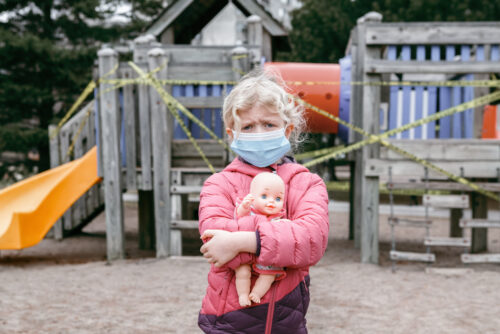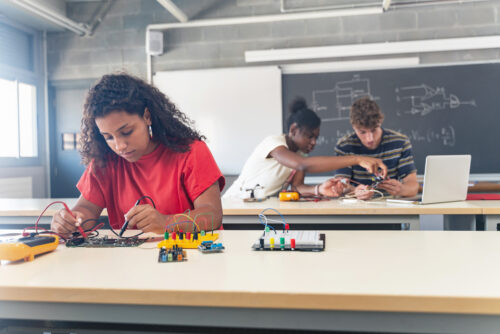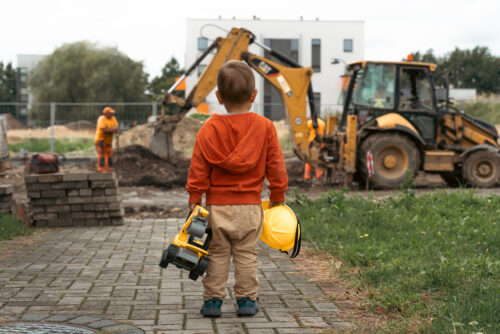In a new book, Seth Kaplan provides donors with a useful road map for supporting the men and women working to rebuild communities through a “sideways approach” to building relationships.
Weakening social bonds have left many of our neighborhoods and civic communities fragile. Healing these social bonds, and the social capital they create, must be a particular focus for involved citizens and donors. What we need now are “social repairers,” suggests Seth Kaplan in Fragile Neighborhoods: Repairing American Society One Zip Code at a Time—people who use what he calls a “horizontal” or “sideways” approach to strengthening personal relationships and neighborhood institutions.
With Fragile Neighborhoods, Kaplan has written a wonderfully practical book packed full of lessons learned from a lifetime of studying violent conflict—both in fragile states worldwide and in fragile neighborhoods in the U.S. While his book makes a passing reference to philanthropy writ large in the book’s conclusion, it provides donors with a useful and practical road map for supporting social repairers—the men and women who work to rebuild communities “one zip code at a time.”
Kaplan’s book has three parts. Part 1 lays out what Kaplan means by a “sideways approach” to rebuilding communities. Working horizontally, or sideways, means two things. First, it means working across relationships to build coalitions that strengthen the day-to-day relationships we have with our neighbors. In other words, repair happens not only by introducing new elements or relationships into a community but by strengthening the connections that already exist. Second, working horizontally means bridging the divides that characterize our society by forging bonds across places or between neighborhoods. It differs from top-down big government (or big nonprofit) approaches that “do things to people.” But it also differs from bottom-up approaches which often focus too narrowly on “a very specific problem in a specific place.” Specific places and problems need to be approached in conjunction with the people and places around them.
In Part 2, Kaplan chronicles the work of five social repairers—he also calls them social entrepreneurs—who built organizations that illustrate this sideways approach. Each chapter closes with a collection of “lessons learned” from the enterprises he describes.
One of Kaplan’s examples is Life Remodeled, founded by Chris Lambert in 2011, and working to overcome racial divisions in Detroit. Lambert pastored a nondenominational church and began his work by organizing neighborhood volunteers to build a house for a single mother and her four daughters, who then received ongoing support services. Today, Life Remodeled repurposes properties into one-stop opportunity centers where nonprofits provide services such as youth programs, workforce development, and health and wellness programs. The organization continues its housing work, having invested $43.5 million to repair 194 homes, board up 2,062 houses, beautify 2,076 blocks, and engage 77,020 volunteers—block by block, neighborhood by neighborhood. Social repairers know, in working to rebuild neighborhoods, “that our challenges are not a question of politics or policy, but of practical action at the local level,” Kaplan writes.
Finally, building on these concrete examples, Kaplan offers in Part 3 a set of operational lessons he learned, and how this education led him to rethink the meaning of the American Dream.
The experiences Kaplan discusses in Fragile Neighborhoods lead him to emphasize place-based approaches to social repair that create strong attachments between individuals and the institutions that support and form them, like Life Remodeled. Hence, philanthropic solutions that seek to treat individuals are misplaced. They should instead focus their energies on the places and contexts where people dwell. He urges us to “stop thinking about our society as a set of individuals . . . and more about how we can strengthen the ties that connect us and bring us together.” Only by the social repairer’s approach of addressing social problems “place by place . . . can we hope to restore our society, one neighborhood at a time.”
In what follows, I take the liberty to distill the nearly fifty lessons Kaplan learned observing the sideways approach in action down to a list of five. Think of it as a donor’s quick guide to supporting place-based, sideways approaches to strengthening neighborhood institutions and relationships. While all of Kaplan’s lessons learned in their original context are worth the reader’s time and reflection, these five struck me as especially pertinent for donors:
- Lead with a values-based approach. “Values” here carries two senses: what a community values, and what is most valuable within a community. Hence, initiatives you support should build on a community’s assets. But they should also encourage families to cooperate and build social networks around common identity and values—and then regularly use those networks for mutual support. It also involves respecting the positive culture of a neighborhood and its norms, and draws locals into planning processes. For example, the values-focused and asset-based approach that guides the work of Life Remodeled is threefold: community first, bold humility, and always find a way.
- Focus on hiring locally. Recruiting local residents (and paying them for their services) must be a priority in the community-focused work you support. For example, you might hire a full-time neighborhood quarterback to plan and implement programs, establish partnerships, import know-how, and adapt models used elsewhere. Charitable organizations should also consider paying for part-time social navigators to help people access institutions and networks that they want to join. Local residents are also best suited to offer advice and to act as community gatekeepers on advisory groups.
- Offer more than just material support. A sideways approach demands that we combine material assistance with support that bolsters relationships and networks, especially intergenerational networks. Such support might include family-like support systems with counselors who help individuals navigate the complex personal experiences they have faced. [GETTING ABSTRACT AGAIN] Intergenerational networks can become strong social networks when built on common identity and values. Donors should help to build them, then encourage people to call on those networks for support on a daily basis.
- Create community progress reports. Establish early warning systems and make ample use of the right kind of data (i.e., locally relevant, contextual, and specific) to see how your planning and programming efforts are developing. A community progress report helps you spot emerging risks or trouble spots. You can also refine your work on a continuous basis by tracking your outcomes and costs. Expect mistakes and setbacks and be prepared for long-term effort. For example, the Detroit Regional Chamber of Commerce partnered with the Gallup organization to survey the perceptions and life experiences of Detroit residences, including the Durfee neighborhood where Life Remodeled has worked. That neighborhood now has the second-highest perception of thriving opportunities among all neighborhoods in the city, providing helpful, third-party feedback to the community and Life Remodeled staff.
- Build indigenous capital. What Kaplan calls “indigenous capital” is wealth that sticks around—it supports local entrepreneurs and businesses and invests in the local economy. Life Remodeled has done this through its opportunity hubs and neighborhood home building and beautifying work. Look for ways to boost resident and business access to capital and the skills necessary to leverage it, including apprenticeship programs for young people and adults that provide a pay as you learn approach to jobs and careers.
For Kaplan, relationships and social dynamics affect not only the trajectories of countries but also those of neighborhoods. Strong, positive neighborhood connections and dynamics allow individuals to reach their potential and flourish, a building block for achieving the American Dream. He believes that donors can do something “that contributes . . . to a real place and real people . . . by investing locally.” This “sideways approach” is the most promising avenue towards helping people achieve that Dream today. The five principles presented here based on Kaplan’s book are a practical first step for guiding donors in doing that.






